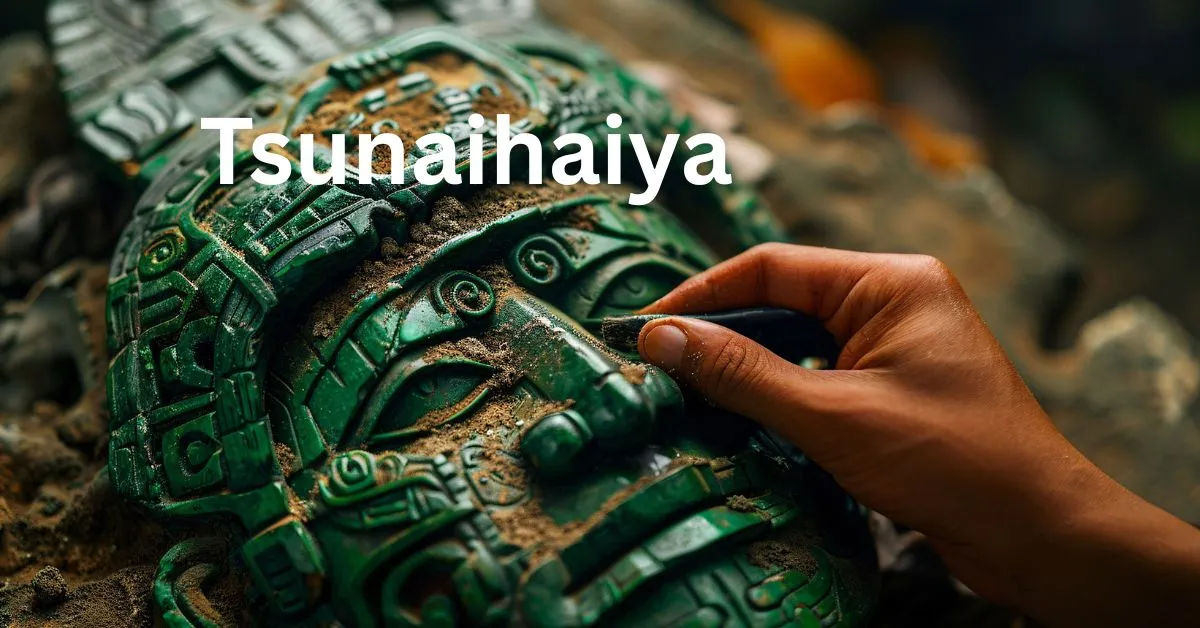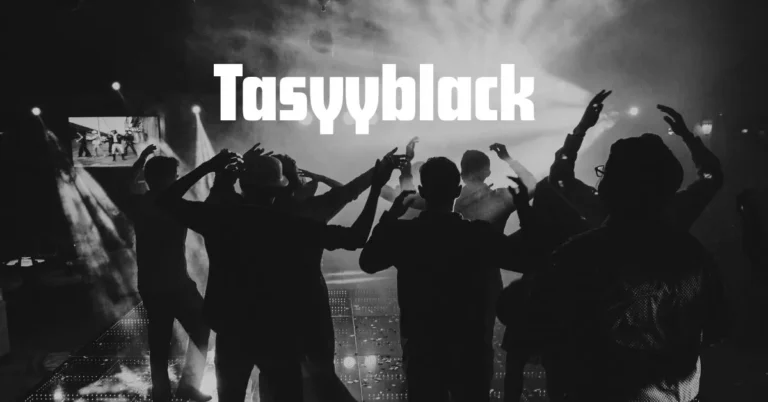Tsunaihaiya: The Living Symbol of Identity, Heritage, and Artistic Expression
Introduction
Have you ever come across a cultural symbol that seems to hold an entire history within its patterns? Tsunaihaiya is one such expression — a powerful emblem that reflects creativity, pride, and ancestral legacy. Rooted in Native American traditions, Tsunaihaiya is more than an art form; it’s a living narrative that connects people to their origins. Every curve, texture, and color carries meaning — a story told through generations, a reminder that identity is both personal and communal.
In today’s world, where cultural identity often gets blurred in the noise of modern life, Tsunaihaiya serves as a grounding force — preserving tradition while adapting to new forms of expression. From jewelry and clothing to music and visual art, this symbol continues to evolve while maintaining its spiritual and historical essence. Let’s explore the fascinating journey of Tsunaihaiya — its origins, purpose, and enduring relevance.
The Origins and Historical Roots of Tsunaihaiya
Ancient Beginnings and Tribal Significance
Tsunaihaiya traces its roots to ancient Native American communities where it was deeply woven into daily life and identity. Historically, it wasn’t just an art form but a sacred means of communication — a visual language representing stories, lineage, and spirituality. Tribes used Tsunaihaiya in ceremonies, on clothing, and within sacred spaces to express harmony with nature and the cosmos.
Each design often reflected the environment — rivers, mountains, animals, or celestial patterns — symbolizing the tribe’s bond with the natural world. For instance, certain patterns were believed to protect the wearer from negative energy or connect them with ancestral spirits. In this sense, Tsunaihaiya became both an artistic and spiritual bridge between generations.
Evolution Through Time
Over the centuries, Tsunaihaiya evolved as tribes interacted with other cultures and adapted to new materials and techniques. While the designs retained their symbolic power, artisans began incorporating modern tools, dyes, and textiles. Yet, the essence remained the same — storytelling through craftsmanship.
This evolution mirrored the resilience of Indigenous peoples: adapting without losing identity. Even as modernization spread, Tsunaihaiya continued to be a reminder of cultural continuity, strength, and creativity.
Symbolism and Meaning in Tsunaihaiya
A Language of Symbols
At its heart, Tsunaihaiya is a symbolic language — each pattern or color carries meaning. Circles may represent unity or the cycle of life, triangles might symbolize balance or strength, and lines often depict journeys or transitions.
These designs are not randomly created. They reflect personal experiences, tribal narratives, or collective beliefs. A single motif could represent a clan’s history, a warrior’s spirit, or a woman’s journey through motherhood. This deep layering of meaning makes Tsunaihaiya not just decorative but profoundly emotional.
Connection to Identity and Heritage
For Indigenous communities, Tsunaihaiya embodies belonging. Wearing or displaying it is a way of saying, “This is who I am, and this is where I come from.” It connects individuals to their ancestors — keeping oral traditions and spiritual beliefs alive through visual form.
Even today, many Native American artists describe creating Tsunaihaiya-inspired pieces as an act of remembrance and resistance — reclaiming a heritage that colonization once tried to silence. Every thread or brushstroke becomes a declaration of identity and survival.
Tsunaihaiya in Modern Creative Expression
Art and Visual Storytelling
Modern artists have reimagined Tsunaihaiya as a contemporary art form while preserving its cultural foundation. Painters, sculptors, and designers integrate its motifs into galleries, murals, and installations. These modern renditions often mix traditional tribal aesthetics with urban and digital influences.
For example, some Indigenous digital artists use Tsunaihaiya-inspired patterns in NFTs or virtual art exhibits to tell stories about identity in the digital age. Others combine ancient symbols with modern photography to explore themes like migration, heritage, and cultural resilience.
Fashion and Cultural Representation
In fashion, Tsunaihaiya has become a visual statement of pride and authenticity. Indigenous designers are weaving these motifs into clothing, beadwork, and accessories — not for trend’s sake, but as a way to celebrate ancestry.
Runway collections showcasing Tsunaihaiya patterns symbolize more than beauty; they reclaim cultural narratives. However, this resurgence has also sparked discussions about cultural appropriation — when non-Indigenous brands use these symbols without understanding or respecting their origins. Responsible designers ensure collaboration and credit, keeping the sacredness intact.
Music, Dance, and Multimedia
Tsunaihaiya’s rhythm extends beyond visuals. Many Native musicians draw inspiration from its patterns and meanings, translating them into sound and movement. Drum beats mirror its repetition and symmetry, while dancers embody its stories through choreography.
In this way, Tsunaihaiya becomes not just seen but felt — a multisensory experience uniting tradition with innovation.
Cultural Importance and Contemporary Relevance
A Bridge Between Past and Present
Today, Tsunaihaiya stands as a reminder that tradition and modernity can coexist. It bridges generational gaps, allowing young Indigenous artists to rediscover their roots while contributing new interpretations.
Workshops, online communities, and cultural preservation projects have played a vital role in reviving this heritage. By learning ancient techniques from elders and merging them with digital art forms, a new generation ensures Tsunaihaiya remains alive and evolving.
Community and Spiritual Value
Beyond art, Tsunaihaiya strengthens community ties. During tribal festivals and ceremonies, it often serves as a collective identity marker. Each tribe might have unique patterns symbolizing unity, balance, or protection.
Spiritually, it continues to represent harmony with nature — reminding people to live in balance with their surroundings and honor the wisdom of their ancestors. This connection gives Tsunaihaiya a timeless quality that resonates deeply even in today’s fast-paced world.
Challenges: Preservation vs. Commercialization
Like many Indigenous cultural symbols, Tsunaihaiya faces a delicate challenge — maintaining authenticity in a globalized, commercial world.
The Threat of Cultural Appropriation
As fashion and digital media discover Indigenous aesthetics, Tsunaihaiya’s motifs are sometimes used without permission or context. When stripped of meaning, these designs lose their sacredness. This not only offends cultural sensibilities but also risks distorting historical truth.
Respectful collaboration is key. Brands, artists, and educators must engage with Indigenous communities directly, ensuring that representation remains accurate and respectful.
Preserving the Legacy
Cultural preservation programs are emerging to document, teach, and protect symbols like Tsunaihaiya. Elders and artists are partnering with museums and educational institutions to archive techniques, stories, and meanings for future generations.
Digital preservation — through 3D scans, online archives, and interactive exhibits — helps ensure that the legacy of Tsunaihaiya survives and continues to inspire creativity worldwide.
The Artistic Process Behind Tsunaihaiya
Creating Tsunaihaiya is both a spiritual and technical process. Traditionally, materials such as clay, beads, fabric, and natural dyes were used. Every element had symbolic importance — red might signify life force, blue could represent water or peace, and white often denoted purity or spirit.
Artisans often enter a meditative state before creating a piece, believing that energy and intention flow through their hands into the art. Modern artists continue this ritual, blending intuition with technique. Whether painted on canvas or crafted in silver, every Tsunaihaiya piece tells a personal and ancestral story.
Global Influence and Cross-Cultural Inspiration
Tsunaihaiya’s influence has extended beyond Native communities. Artists and anthropologists worldwide study its design logic and philosophy, finding inspiration in its symmetry and depth of meaning.
It has also influenced contemporary art movements focused on identity and decolonization. By celebrating Indigenous creativity, Tsunaihaiya challenges mainstream narratives and reclaims space in global culture.
Yet, at its core, it remains a personal symbol — belonging to those who live, breathe, and honor its origins.
Conclusion:
Tsunaihaiya is more than art — it’s a heartbeat of culture, a voice from the past guiding the present. Its patterns remind us that identity is not static; it’s a living story shaped by history, experience, and creativity.
As modern generations continue to reinterpret it through art, music, and technology, Tsunaihaiya remains a symbol of resilience and pride. Preserving its meaning ensures that future artists don’t just imitate it — they understand it.
So the next time you see a pattern or piece inspired by Tsunaihaiya, take a moment to reflect on the story it tells — one of strength, spirit, and endless creativity.
Cultural heritage isn’t just about remembering the past; it’s about keeping it alive.
FAQs About Tsunaihaiya
1. What does Tsunaihaiya mean?
Tsunaihaiya represents a sacred artistic and cultural expression among Native American tribes, symbolizing identity, storytelling, and connection to ancestry.
2. Is Tsunaihaiya still practiced today?
Yes. Many Indigenous artists continue to create Tsunaihaiya-inspired works, blending traditional techniques with modern art, fashion, and music.
-
Why is Tsunaihaiya important?
It preserves ancestral heritage and serves as a visual language that connects generations, reminding communities of their cultural roots.
4. How can non-Indigenous people appreciate Tsunaihaiya respectfully?
By learning its history, supporting Indigenous artists, and avoiding commercial reproductions that exploit or misrepresent its meaning.
5. What materials are used in Tsunaihaiya art?
Traditional materials include beads, clay, textiles, and natural pigments. Modern artists may also use metal, digital media, or synthetic dyes while honoring original techniques.







